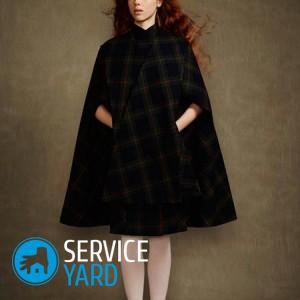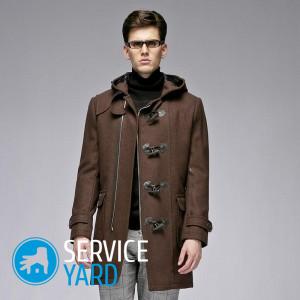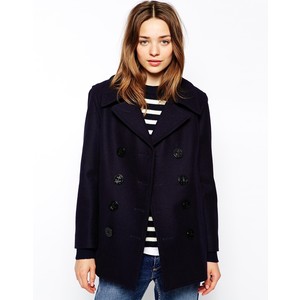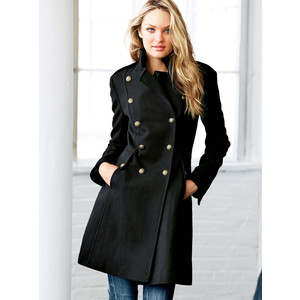Coat fabric - choose the right one
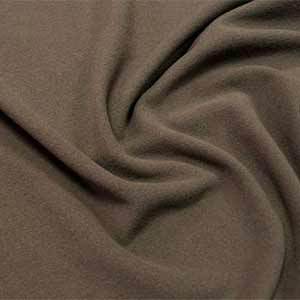
Choosing a ready-made coat in the store, many are surprised how much the prices for a particular product differ, although outwardly they are similar - in cut, style, length. In fact, you should not be amazed for a long time, because the fabric for a coat can be different, which means that the cost of the whole thing will largely depend on what material the manufacturer preferred for sewing a masterpiece of outerwear from a particular series. Knowledge about possible fabrics for coats is needed in any case - both in order to buy a comfortable, wear-resistant product for yourself, and in order to choose the right material if you decide to sew such a thing yourself. From this review you will find out what materials are available on the market for sewing this elegant outerwear and how they differ.
to contents ↑Classification of fabrics for coats
There are many signs by which different types of materials are distinguished for tailoring upper winter and demi-season clothing. The most significant are:
- type of material at the base - it can be wool, cotton, synthetic fibers;
- structure - canvases are fine-woolen, woolen, pile;
- the type of thread used for woven work - can be ordinary, twisted, double;
- embossing - fabrics with a smooth structural surface are used for sewing such products;
- color gamut - there are both monophonic canvases and materials including several colors mixed in a specific pattern.
The most interesting from the point of view of design and thermal insulation, as well as from the side of wear resistance, comfort and softness are woolen fabrics for coats. There are an unlimited number of them on the market today - in addition to standard options, each manufacturer also offers his own, improved in one way or another, canvases. Naturally, they all differ in softness, density and price. We offer a small overview of the different types of woolen fabrics for coats so that you can determine them by their appearance and touch by yourself, as well as be aware of the pros and cons of each one in advance.
to contents ↑Important! When choosing a coat, not only the fabric is important, but also the style and length. When you deal with materials, we recommend that you read our other articles that will help you choose, and maybe sew, the ideal thing for your figure and purpose:
Gabardine
Merino wool is used to make this coat. Due to this, as well as production technology, in finished form the material has:
- high rigidity, which allows you to keep the shape of the product well;
- moisture resistance - a very important property that makes it possible to wear such outerwear even in bad weather;
- a little crushable - this makes it easier to care for the thing.
Appearance is a plain fabric for a coat, which has a pattern in the form of a small textured corner hem.
to contents ↑Tweed
Such a material is based on a mixed composition of various proportions of wool, viscose and acrylic. Tweed fabrics are made using the combined weaving technology. Due to this, the front side can be made with different patterns and the thickness of the material varies.
Tweed is a classic low-cost coat option and is very practical to wear.
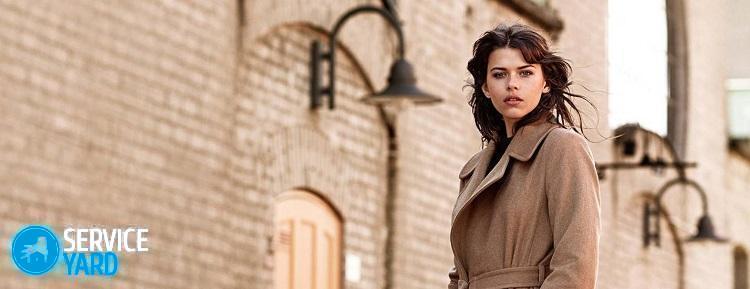
Diagonal
The diagonal stands out among the entire line of woolen fabrics for outerwear with its elasticity and perfectly smooth texture. The standard design of this canvas is a shallow double hem located at an angle.
to contents ↑Crepe
This is another version of the combined fabric for coats, which includes not only wool, but also viscose, nylon and nitron fibers. Thanks to this, it is possible to drape the material, and when wearing and sewing, it must be borne in mind that it stretches quite strongly. The canvas is made of tightly twisted threads - this gives a rough texture.
to contents ↑Boucle
Very beautiful and refined material, which is great for tailoring the original coat. The composition has fibers of natural wool, as well as mohair and synthetic acrylic. They are interwoven into a small structural pattern, and it can be either monophonic or monochromatic.
With all its attractiveness, such a fabric for a coat as a boucle is very delicate. Due to its loose structure, it is quickly contaminated and difficult to clean. And over time, with inaccurate wear of things, elongated loops and puffs may appear.

Cashmere
Cashmere is the most expensive fabric for a coat, but it is it, like no other, that will allow you to always feel comfortable, warm and beautiful in things from this fabric. Very thin fibers from the undercoat of cashmere goats are used for the manufacture. The exterior design is decorated with twill weaving. Most often, cashmere is made in one color, but the modern palette is presented both in classic pastel colors, and more fashionable, bright. This makes it possible not to limit yourself at all when choosing the right shade for your clothes, but to start only from the style and preferred style.
to contents ↑Drap
Drape is a huge group of fabrics, the production of which is carried out both from natural and synthetic fibers. Depending on the goal, manufacturers include at their discretion nylon, polyester, viscose, nitron, cotton. Usually, dyeing is performed even before weaving the threads on a special apparatus.
A distinctive feature of this category of paintings is that the direction and height of the pile can be absolutely anything - it all depends on the particular model. The pattern is small and coarse, with the inclusion of yarn, melange and fancy wool. But all this relates to the appearance of the canvas. The inner part of such a coat fabric usually has a comfortable, felt-like structure, which ensures its high thermal insulation properties and wear resistance.
to contents ↑Important! From whatever material you choose or sew a thing, you will need to properly care for it. You won’t have any problems with this if you bookmark our separate publication and adhere to the rules and tips provided therein. Click on the link “How to clean my coat at home?”.
Stock footage
The presented types are far from a complete list of all possible fabric options for coats. Along with such canvases, woolen ratin, flacome and velor are widely used, as well as lighter ones based on cotton - velveteen, moleskin. What exactly to give preference to, choose based on your own perception of the fabric, because in different people the same material causes different sensations when touched. Of course, do not forget that outerwear should be not only beautiful, but first of all - practical.




